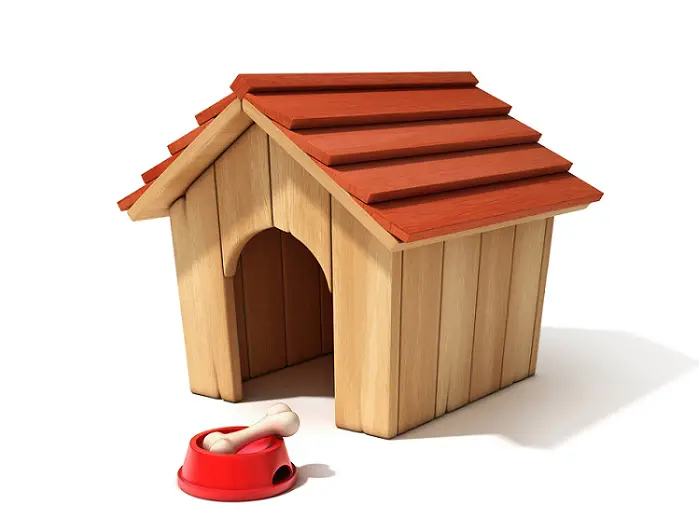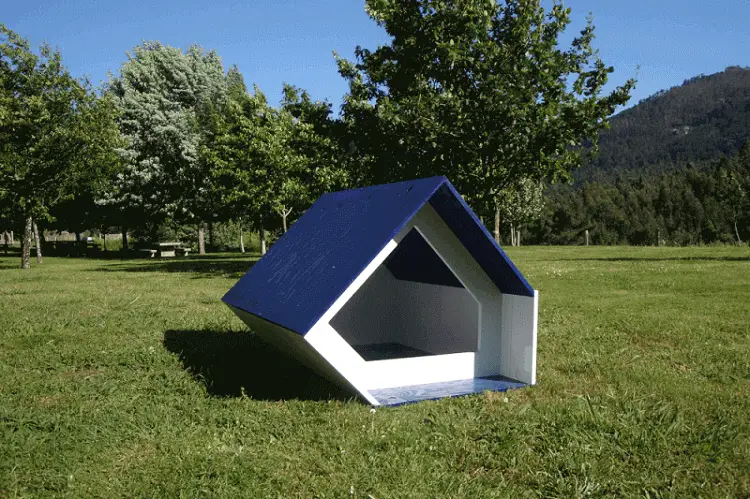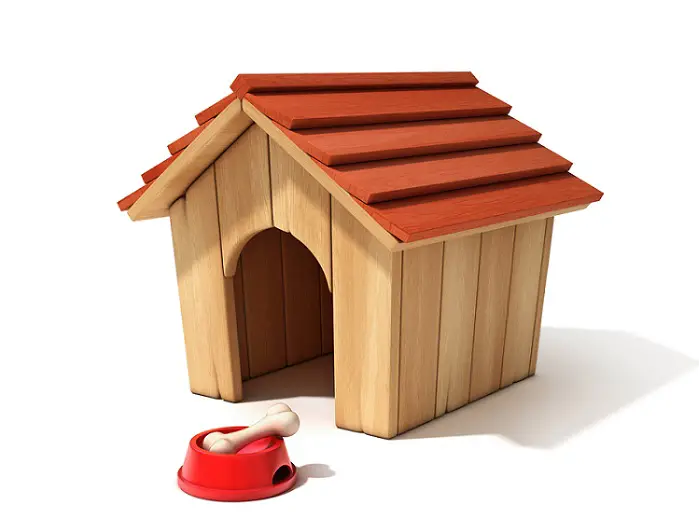Table of Contents
*This post may contain affiliate links. As an Amazon Associate we earn from qualifying purchases.
When building a dog house, there is so much to consider that it may get a little overwhelming. After all, not everyone is a mathematical genius or a construction guru. However, your large dog house just needs to provide safe shelter and warmth for your pooch. That isn’t as hard as it may seem.

Top 5 Aspects to Consider When Building a Large Dog House
#1. Size

Just how big do you need your dog house to be? To get a good idea, go to a pet store and take a look at crates for your dog’s size. A Labrador needs a large dog house, but perhaps not as large as a great dane. You must also consider how long the dog will be inhabiting the dog house.
If your dog is a permanent member of the outdoor world, it’s better to give him or her a little more room to stretch out. Dogs that come in and out at their will but have a dog house out back for comfort’s sake have more options and can do with a slightly smaller abode.
Your average Labrador of around 60 pounds needs a dog house that is about three ft wide and three ft long. Height deeply depends on your dog. Measure to the top of your dog’s head and add a foot to the bottom of your roof. You want to be sure that your pup has plenty of clearance as well as plenty of room to turn around and lie down.
If you intend to whelp a litter of puppies outdoors, consider the size of your dog and triple these measurements. That means a 10 foot by 10-foot pen if the dog is 60-70 pounds. Remember that whelping litters outside is difficult and really not for the beginner dog breeder. At this size, it may just be easier to buy a small shed for her.
#2. Wood Choices

Improper wood, that is to say, treated wood, tends to be an enormous issue. As dogs do enjoy chewing, this means that they can easily get deadly chemicals ingested through chewing the wrong kind of wood.
So what kind of wood do you want to avoid? Cedar should be avoided at all costs because this wood contains a number of skin, nose, throat and mouth irritants to dogs. Long gone are the days when you threw cedar chips in a cage to keep your pup warm over the winter. There have been too many cases of dogs getting sick from this.
You should also avoid treated lumber. At least some of you reading this are going to shake your head at this, but there is an incredibly good reason. Copper toxicity in dogs is deadly. What does copper have to do with treated lumber? The mixture that lumber is dipped in to be treated is copper based. This means that the chemicals leech into the lumber and stay there. When your dog gnaws on its house (and trust me, they will), the dog gets this copper. It builds up in the system very quickly and can cause kidney failure, liver failure, heart palpitations, and death.
Ideally, you want to use untreated aspen plywood. Aspen is very pet safe and untreated lumber is still “raw.” We’ll be sealing it later.
Remember that you can have your local lumber store cut your wood to size. This means all you really need to do at home is screw or nail the lumber together as it’s cut and perhaps chop out your dog’s entryway. Simple and easy, right?
#3. Painting

Once you have your dog house together, it’s time to consider how we’re going to keep the wood safe from the elements. Using a non-toxic, waterproof paint is the best thing that you can do to safeguard your doghouse. Roll the paint on with a paint roller and make certain that your large dog house dries completely before your dog is allowed near it.
It is advisable only to paint the outside of the large dog house. Your dog won’t be fond of the scent of paint lingering inside while they try to sleep.
#4. Raised Floors or Dirt?
A raised floor can easily be made from free surplus wooden pallets. Simply close up any gaps on the pallet with spare wood and screw the bottom of the dog house to the pallet. You can do this quickly. This way, your dog will have a nice warm area to lay on.
If you prefer to give them a simple dirt floor, or you have a dog that likes to dig a nest in the ground to sleep in, consider giving the dog a few cozy blankets to snuggle into. Make sure that the dog house is somewhere that will not flood. No dog likes to be wet in their dog house, even dogs that love swimming.
#5. Roofing
Roofing comes in two simple frames: flat and peaked.
Peaked roofs should be measured with a roofing calculator, trussed and shingled with a high-quality construction shingle. There’s no reason to get 30-year shingles for a large dog house, though, unless you intend to keep the dog house for many years to come. Shingling a dog house is the same as shingling anything else. You tar the roof, place down paper while the tar is still wet, and use shingle nails to place shingles along the surface of the roof.
For those that desire a quick and simple roof with no shingles, you can make a flat roof. Get enough plywood to fit comfortably across the top of your large dog house. Nail or screw the roof on and run a bead of caulk along the area connecting the walls and the roof on the outside of the dog house. Paint the top of the roof with tar. This will waterproof the plywood and create a solid roof. This is also ideal for dogs that like to perch on their roofs and sing to the stars, as a great many dogs like to do.
All in all, building a large dog house is not as hard as it seems. All you have to do is to take into consideration the aspects we have detailed in this article. Let us know how well they work for you and your pet friend.

